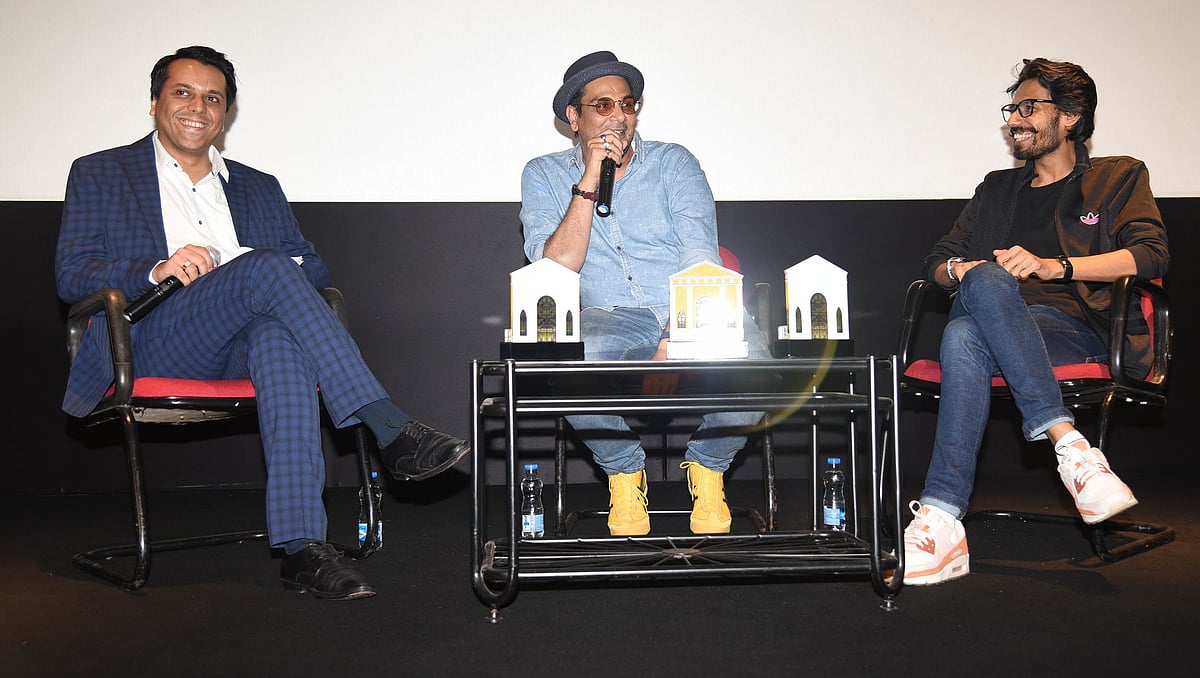It is important to know your target audience. Once you know that it becomes easy to reach them with your message. Highlighting this aspect in his Masterclass ‘To cut or not to cut’ in IFFI, noted film editor A Sreekar Prasad shared key insights on the nuances of film editing.
Talking about the importance of knowing your target audience, Prasad exhorted, “Filmmakers, especially the younger lot, need to know the audiences well. Knowing the target audience well helps in ensuring the film’s success. In most of the films, the high one gets is at the end when it becomes a success and is liked by the audiences.”
Talking about exaggerations in films, Prasad said that the level of exaggeration varies according to the film and the cast. He said “In star films, we exaggerate moments to please the fans, the level can vary but it is there. It boils down to enjoying the film, you cannot compartmentalise, it is important not to overdo exaggeration and bring in reality.”
On his experience of editing, Prasad elaborated that every experience leads to another experience. “It teaches you what to do and what not to do. It should be a learning experience every time. It is very easy to give up but it is more challenging to work towards the goal and achieve it,” he asserted.
Speaking about the coverage technique with various angles and multiple cameras and its impact on editing, Prasad had a message for younger filmmakers – “Younger filmmakers cannot imagine the cut till they sit at the cutting table. Many directors do not have experience of an editing room. Earlier, it was mandatory for filmmakers to have that experience to make their directing better. Now, we get to the editing room later, but now there is scope to edit more especially with the help of software, but it is strenuous to get the right thing out.”
Explaining the importance of pauses, Prasad briefed, “Pauses are a pan India concept but typically in Southern films, the lag is not between shots but the whole story. It is important for editors to know the timing. Each situation requires its own timing. Cutting at the right time is necessary and makes a huge impact and smoothness of the cut of a particular scene depends on the situation and must be decided as the situation demands.”
He added, “Sometimes, replies are not supposed to be given so we stretch the moment with a pause to make it more effective and impactful. The actor might not have taken that long a pause but to make the sequence work, we increase it. Back-to-back dialogues can become strenuous on the mind, the audiences need to feel the moment so they need time for it to sink in. Like a joke, audience must be given time to understand and feel the emotion.”
All these things play a huge part in editing being smooth. Silent sequences are impactful and shares the feeling attached and with background music, the emotion is there too. Showing two versions of the same sequence of a film, Prasad explained how directors allow long pauses to make the scene more effective and impactful.
Answering a question from the audience on what to keep in mind while shooting songs, Prasad said, “Songs have always been part of film history and it is used to give visual high. Earlier lyrics were used as a part of storytelling but we have now come to a point where songs have become a story telling scene. The number of songs in a film have come down gradually now as the idea is to see how the story can flow.”

Answering another question on how he gets to know that he has done a good job as an editor, Prasad said, “I don’t get to know someone needs to come and tell me. I keep an open mind when I work with various people and the director is the one who should feel that the work is good.”
Answering a question on the process for climax, Prasad exhorted, “Climax is culmination of the story and plays a great part. If climax is not good then whole film is incomplete. Unfortunately, in Indian cinema, we have two climaxes, one at the interval and another one at the end. An interval high is required and sometimes it is so high that the first half is considered better than the second half. Climax is the last scene so that is what audiences take back with them,”
Elaborating on editing styles for OTT, Prasad said it depends on whether it’s a film or series. Series has a difference in its writing style. Pattern of writing is in a way that every episode is a cliff hanger and we need to be ready with several intervals or climaxes, he concluded.










